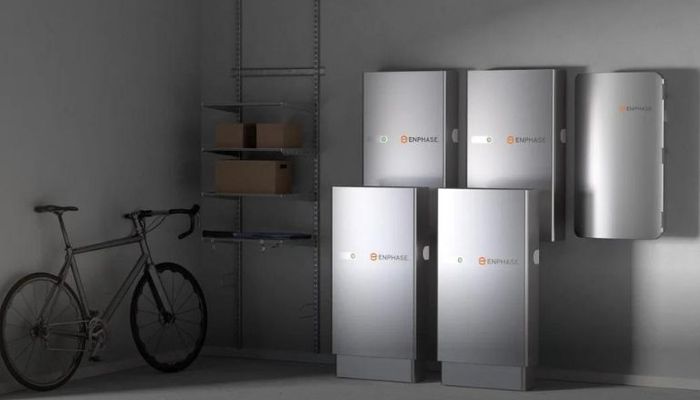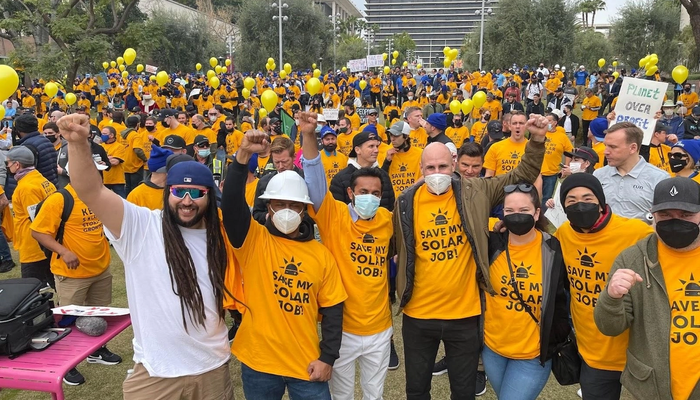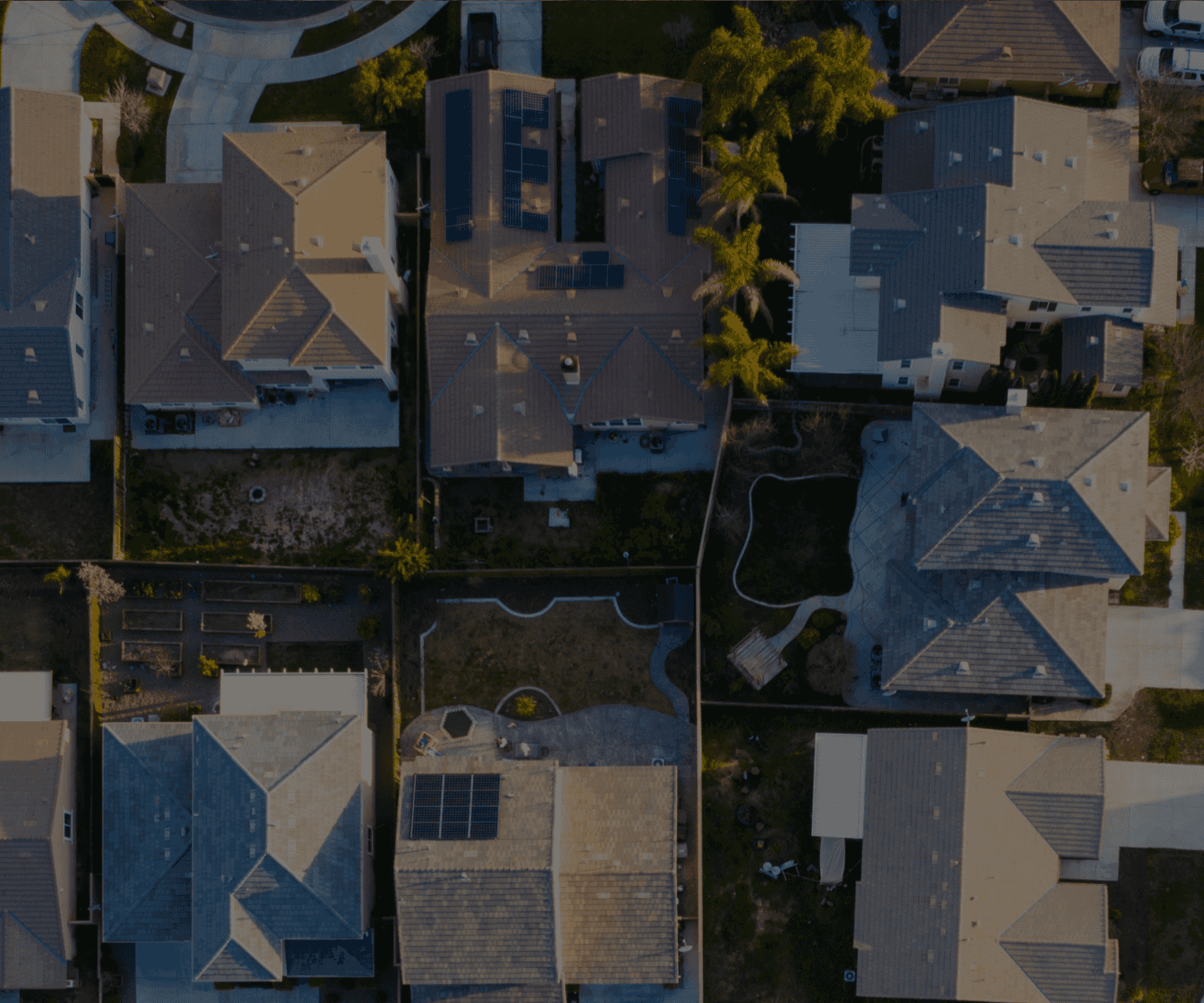What Happens During a Solar Panel Inspection?

Guest Post by Big Living | Little Footprint
If you’re doing a DIY solar panel installation, you’ll have to go through an inspection process for final approval after installation. Solar panels require electrical and structural work, so your local government and utility company must ensure your installation meets building and safety codes.
Many people are nervous about the inspection process, but it’s straightforward as long as you install your system correctly. We are DIY-ers who went through the inspection process firsthand. It was scary at first, though the process turned out to be a simple conversation with the inspector. But to help ease any worries, we’ll cover what happens during a solar panel inspection and provide a solar panel inspection checklist to help guide you!
To learn more about our DIY solar panel journey and other tips, check out the Going Solar Series on Big Living | Little Footprint.
The Solar Panel Inspection Process
A solar panel inspection reviews your solar panel system after installation. The inspector (either a local government employee or someone from an inspection service) will schedule an appointment with you at your home to review the entire system.
Sometimes, your permit fees cover the inspection, but this depends on your local government. Ultimately, an inspection is a small price to pay for peace of mind, knowing you installed your system correctly and won’t be putting your home or family at risk.
An inspection guarantees the safety of the solar panel system for yourself and others. The goal of the assessment is to make sure your system is up to code, doesn’t pose a fire hazard and operates properly and efficiently.
The inspection process may vary by local government and the inspection service, but there are general categories they will review. There are two main categories for your solar panel inspection: electrical system and structure.
Electrical System
During the electrical system inspection, the inspector will review your main service panel and the entire electrical system. They’ll look for fire safety issues or potential shorts that could cause injury or damage.
The inspector will also look for proper grounding of the solar panels, the mounting rails and metal conduit if used. They’ll assess the proper gauge, wire types and wire connections in the correct locations. They will also look for properly sized conduit runs and breakers within your main service panel, especially if you made an electrical service upgrade to meet capacity requirements. The inspector will compare everything to your submitted and approved plans from the permitting process.
Many cities also have requirements about the location of your AC and DC disconnect switches. They need to be close to each other and close to your electrical meter, so emergency personnel can quickly locate them and shut them down in an emergency.
Finally, the inspector will check your system to ensure you have all the required safety and specification labels throughout your system.
Structure
A solar panel inspection also includes reviewing the structural installation and your home’s structure for roof mount systems.
The purpose of structure inspection is to check if the panels will hold up to elemental forces throughout the system’s lifetime, to ensure it won’t damage yourself or your home, and to know that in cases of extreme weather, the installation won’t jeopardize the structure of your home itself.
The inspector will review the solar panel installation for correct panel attachment, proper installation of the rails, and any reinforcements to the house’s structure. Again, the inspector will compare your system and structural changes to the permit-approved plans.
The solar panel inspection checklist below covers the electrical and structural components you can expect to discuss during the inspection.
Solar Panel Inspection Checklist
Here are 20 items to check as you prepare for your upcoming solar panel inspection. These items should be on your solar panel plans to verify before the inspection.
Electrical Solar Panel Inspection Items
- Correct breaker size
- Correct wire size
- Correct conduit size
- Correct type of wire
- Correct grounding
- Tightened connections in the right location
- AC and DC disconnect switch exists
- AC and DC switches are within a specified distance of each other
- AC and DC switches are within a specified distance of your electric meter
- AC and DC switches are easily accessible by emergency personnel in the event of a fire
- Placard showing site layout is next to the meter and disconnect switches
- Proper length of your conduit run and pull box if needed
- All required safety and system specification labels throughout your system
Structural Solar Panel Inspection Items
- Roof attachments are secured to the roof
- Rails are secured to the roof
- Roof attachments are secured into the rafters (if required for your specific style)
- Panels are raised off the roof at the required distance for fire safety
- No dangling cables that touch the roof and could wear out over time
- All panels are securely fastened to the rails
- Rafters reinforced correctly, if needed (specified by plans and engineer)
Lastly, don’t forget to print a copy of your plans! If you made on-site changes, note them on the plans so you can discuss them with the inspector. Having a printed copy of your plans is also great for taking any notes for necessary corrections during the inspection.
Note: This solar panel inspection checklist covers the typical items you can expect but is not exhaustive. Your specific Authority Having Jurisdiction (AHJ) may have additional inspection requirements.
If you have a ground mount solar panel system, keep in mind that additional requirements and review items may vary from the checklist above. A ground-mount system typically goes through two inspections (compared to one final inspection for a roof mount system). Reach out to GoGreenSolar with any of your inspection-related questions.
Conclusion
A solar panel inspection can seem stressful, but if you avoid taking shortcuts and complete your installation correctly the first time, you should pass your inspection smoothly.
Remember to be friendly and courteous to your inspector as they’re also human and just doing their job. Ask questions and be prepared to answer questions they have about your installation. If you’re DIY-ing your installation, I can promise you will know the system intimately at this point!
I highly recommend working with GoGreenSolar to navigate the installation and inspection process. GoGreenSolar offers expert support to their solar customers, helping them prepare for and pass their inspection. We loved working with them, and they were a great resource at every step of the process! Contact GoGreenSolar to help with your DIY solar journey today.
-

About the authors: Amanda and Tyler Santoro are the creators of Big Living | Little Footprint, a site focused on helping people live a greener lifestyle. They are constantly doing DIY projects for their house like installing their own solar panels. They also focus on eco-parenting, making sustainable parenting choices and teaching their child to be eco-conscious. Their family strives to live big while still leaving a little footprint on their environment.
You can follow along with them on their journey and all their tips for improving your green living lifestyle.






